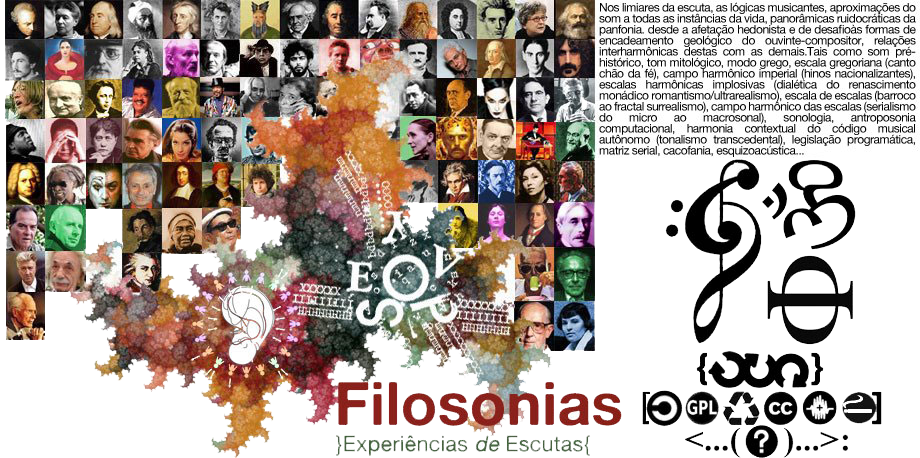Ontological and epistemological questions about what is music, sound, noise and listening: artefacts/structures or human processes?
What is listening cognition and understanding of noise/sound/music?
What is a musical experience? What is a noise experience?
What is the place of musical experience in traditional acoustical analysis?
Listening Analysis
Can traditional analysis be helpful in explaining listenable experience: tension or complementarity?
Interdisciplinary and transdisciplinary approaches to listening.
Formal and informal analysis beyond the score: analysis by ear.
Cognitive maps and music.
Analysis and experience.
Analysis and validity: psychological and ecological reality of existing and future approaches of listening.
Noise, Sound And Music Semiotics
What is musical sense-making?Sense-making and signification: same or different?
 Levels of listening sense-making and its correlations to noise, sound and music:
syntactic level, semantic level, pragmatic level.
Levels of listening sense-making and its correlations to noise, sound and music:
syntactic level, semantic level, pragmatic level.Semantics and hermeneutics.
Semantics and narrative.
Listening Semantics
Music as reference: self reference or extra-musical reference.
Program music/absolute music.
Sintagmatic referentiality in sound and noise.
Sound Pragmatics
Sound as felt, as experienced.
Sound and its inductive power.
Sociology of listening.
Music and entrainment.
Vocal Pragmatics
 Voice as tool for communication (e.g. prosody, techniques, etc.).
Voice as tool for communication (e.g. prosody, techniques, etc.).Voice as tool for expression.
Voice and emotions.
Communicative and affective functions of human voice.
Intermediality Of Listening
Opera, musical, concert albums, song cycles, etc.
Text, performance, music.
Intermediality and communication: role of listener as target or actor.
Intermediality as persuasive instrument.
Attentional strategies: how to capture the attention of the non-schooled listener?
Soundart Intervention.
Listening And Time
Time consciousness and music.
Musical time and realtime.
In-time and out-of-time experience of music.
Perception, memory and imagination.

Listening As Experience
Listening as temporal art.
Music as sounding art.
Sensation, perception, cognition as applied to music.
Experience and cognition.
Embodied and enactive approach to music cognition.
Listening And Emotions
Chills and thrills.
Music and arousal.
Biological foundations of musical emotions.
Cognitive foundations of musical emotions.
Physiological aspects of musical emotions.
Biophony
Neurobiology of listening.
Physiological responses to listening.
Music/noise and the brain.
 Music/noise and the hormone system.
Music/noise and the hormone system.Music As Sound
Impact of sound.
Spectrographic approach to music listening.
Music and overtones.
Music and resonance.
Music and drones.
Music and vibration.
Music and the body.
Music and movement.
Music and dance.
Action and perception, perception as simulated action.
Music and rhythmic entrainment.
Bodily resonance to music.
Music and trance.

Evolution Of Listening
Origins of music: why is there music?
Comparative approach: what are the functions given to listening and music all over the world.
Musical sense-making between nature and culture.
Listening instinct/faculty versus language instinct/faculty
Archeoethnomusicology.
Ecological Approach To Listening
Music as sounding environment.
Sound as listening environment.
Coping with the sounds.
Functional significance of sounds.
Musical affordances in sociological structures.
Listening and direct perception.
Listening Universals
Psychophysical commonalities.
Listening and psychobiology.
Universals of music/noise perception.
 Universals of music/noise cognition.
Universals of music/noise cognition.Sound/music and Gestalt perception.
Auditory scene analysis.
Visualizing Listening
The musical score: limitations and possibilities.
Existing animation software: two-dimensional and three-dimensional.
Iconic versus symbolic approach.
Discrete versus continuous approach.
Spectrogram: limitations and possibilities.

0 comentários:
Postar um comentário